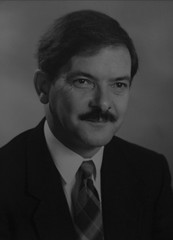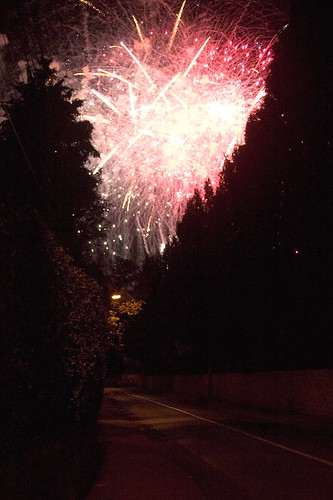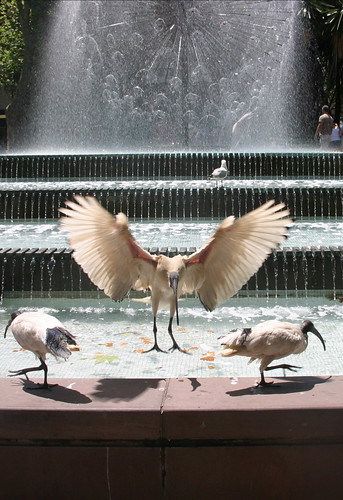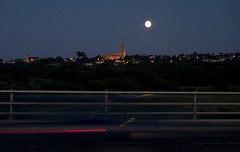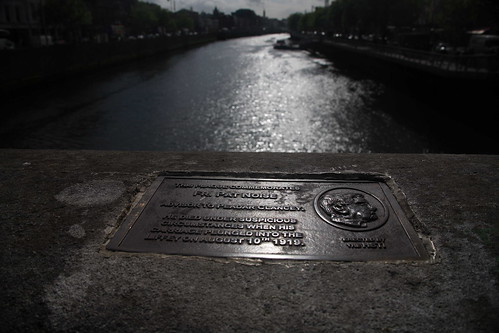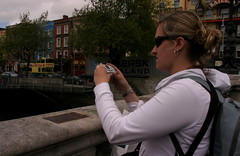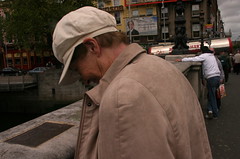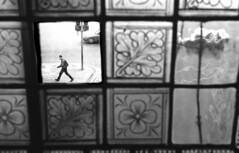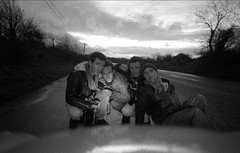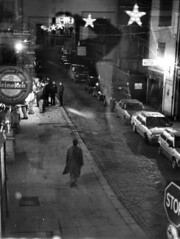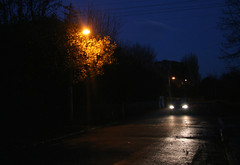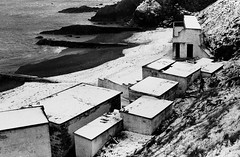
I lived in Bray for awhile in the late 1970s, in a mouldy, crumbling Victorian cottage beside the sea. As with various other dwellings over the years, I shared the rent with a number of friends/cousins. Most of the days passed over me in sleep, after nights of interminable talk about everything and nothing at all. I used wake sometime in the afternoon and saunter out about my never very pressing business; a youthfully retired life in a town that seemed (in my ignorance in these matters) happily in accordance with the general mood.
The photo above (of Naylor's Cove on Bray Head) was taken in the 1980s. This is first cove you encounter, coming down from that steep pedestrian walkway after the Bray Head Hotel. Crowded in summer, cold and lonely in winter. But during the 70s we'd go there some evenings to sit and smoke and skip stones across the water. There was a neglected, narrow, concrete wall, the remains of a swimming pool or small pier, broken in places, chewed and mauled by the sea. At its end was what I assume had once been a diving board, though only the concrete stand remained, like the crude sculpture of some long-necked animal. We called it 'the dinosaur'. There's no sign of it in the photograph (though I think it may have been a little more to the left). Anyway, the sea had probably consumed it by that stage.
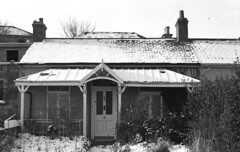
By the 1980s, the cottage we had once rented was already derelict looking (see photo above), but the seafront had not altered greatly; it still seemed submerged in the drowsy, drawn-out aftermath of its status as a popular Victorian/Edwardian Prom.
Myself and my cousins (Dave and Pat and his children) came to live in Bray again in the 1990s. We rented a flat in Westview Terrace, near the station, then moved to the grander-sounding King Edward Lawn, nearer the town centre, where we shared a house with a young mother and her child. Dave, Pat and myself joined a FáS scheme and became involved (with Jim Morrison and others) in setting up an arts centre in the little laneway behind our flat on Westview Terrace, Albert Walk. We had a meeting to vote on a name and I came up with The Signal Arts Centre (since it was only yards from the station).
One evening in 1990, myself and my girlfriend, D, were sitting in the spacious lounge of the old Hibernia Hotel. We had being going out for around three months and had, just that moment, almost agreed (more or less mutually) to break up. We became aware of movement around us, unhurried but purposeful. People were leaving their seats, gravitating towards the bar and the small crowd gathering there below the wall-mounted TV. Was it the grainy green night-visions of ordinance zipping across the Iraqi desert (unreal-looking as Captain Picard's proton torpedos) or did those come later? In any case, we learned that it was official, the Gulf War had just broken out. And so our breakup became postponed for a few weeks, put on the back shelf. Both of us would stay up late watching TV in her place (as in the photo below), keeping track of the changing 'world order', the Shock and the Awe:

By this stage, the town had woken after its century-long doze (or perhaps it was merely ourselves who were finally stirring) and our old cottage, along with its neighbors, was quickly gobbled up by the metastasizing Dawson's Amusements, visible as the hottest cluster of lights on the left in the (colour) photo below:
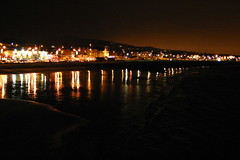
Bray can still occasionally warp into its older self, especially in winter when the wind and rain rolls in, the coloured lights go out on the Head and the seafront empties, as in this photo I took of my cousin (with an unrelated dog) in the early 1990s:
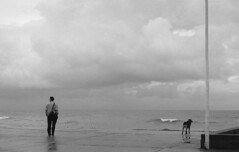
But I am glad to see that, two decades later, it is still all go at The Signal Arts Centre which has moved down the lane to a larger premises on Albert Avenue.
